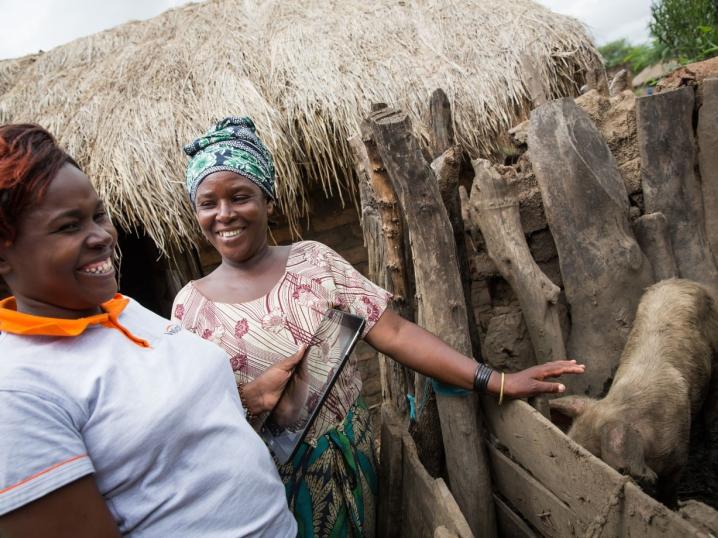Microfinance Equips Women to Improve Children's Lives

Developed by VisionFund’s global strategy director; Johanna Ryan.
For mothers everywhere, children are the first priority. We see this within the microfinance industry as women spend 80 cents of every dollar earned from a growing business on their families. This means children have more nutritious food, better healthcare and housing, and go to school. So it stands to reason that if a microfinance provider wants to most effectively improve the lives of children, it should target women and mothers as its clients.
Providing financial services to women is doubly important as we seek to close the gender gap in financial inclusion. According to the World Bank, women make up 70% of the world’s poorest people and are 17% less likely than men in developing countries to have any form of formal credit. Even when women have access to loans, they do not or cannot access other financial services including savings and insurance. While 700 million people have gained first-time access to financial services since 2011, the gender gap between men and women with this access has not closed.[1]
So if we want to improve the lives of children and also close the gender gap in financial inclusion, our next task is to determine how to attract and best serve women clients. One way to do this is to hire local women as loan officers, women who can relate to clients because they have lived similar lives and understand what it means to be a woman and mother living in rural poverty . However, hiring these women can be difficult because they generally lack a standard resume and can face cultural barriers (such as riding a motorcycle). But innovative recruiting practices enable us to hire staff who can best connect with women clients by speaking the same language, both literally and figuratively.
Rather than seeking young, typically male, graduates of urban colleges, who have the right resume but no links to rural clients, we can recruit and assess candidates from rural communities to identify those who can form strong bonds with clients based on their ability to empathise with their situations. This is the critical element: assuming basic literacy and numeracy, we can train people in the technical skills. What we cannot train is “life experience” or the ability to empathise.
We find candidates by conducting an Assessment Day in the rural area where we need field staff, limiting attendance only by number, not by qualification. Anyone is welcome, although the posters feature at least one woman over the age of 40, and the radio announcements refer to “life experience” being desired. Very quickly we can eliminate those without the necessary numeracy and literacy skills, and then we assess the people skills of those remaining after each exercise. In our experience, about 10% of those who come to the Assessment Day are accepted to the training programme, but everyone is given a chance. We regularly recruit women in their 40s and 50s who have never before been employed. Not only is her life transformed, but we are confident she has the skills to help bring a more secure future to the children in her community
Reaching and effectively serving a woman client also means microfinance providers have to offer products specifically designed to serve her needs and are suited to her family’s lifestyle. It helps considerably if throughout the microfinance organisation there is understanding and sensitivity to the specific needs of women and mothers. This means not just creating suitable products, but also recognising the risks specific to women loan officers, and creating training for staff and clients that embeds a culture focused on helping women transform the lives of their children and communities.
At VisionFund, our mission is to empower families to grow businesses and incomes so they can provide better lives for their children. Last year we served over 800,000 women clients and through them nearly 3.9 million children. Join us as we scale up our efforts to empower women and build brighter futures for children.
[1] unspsa, pg. 18 http://unsgsa.org/files/5514/4526/5186/final2015web.pdf